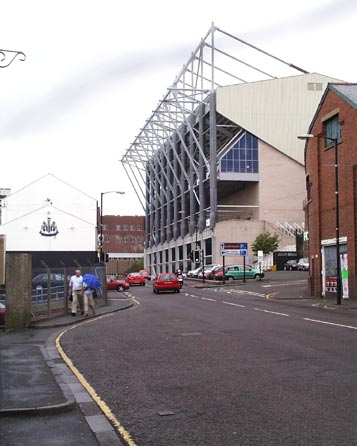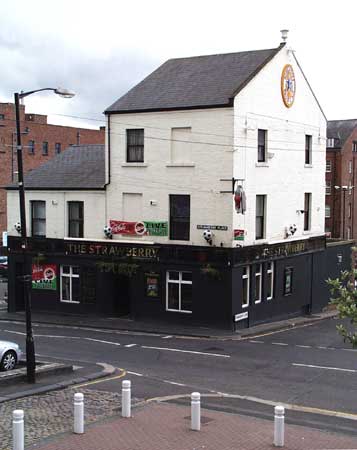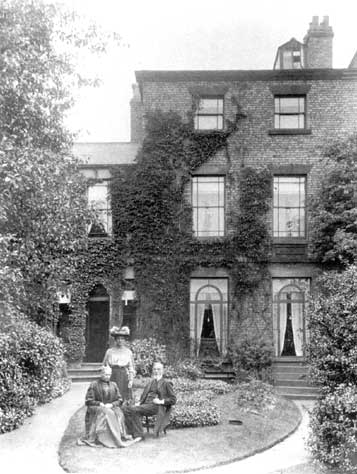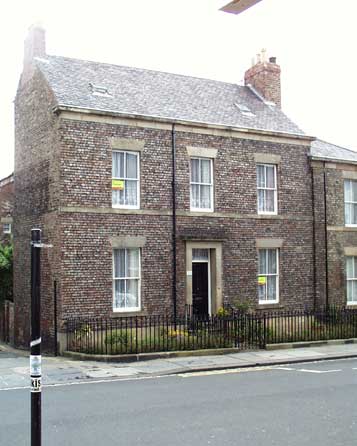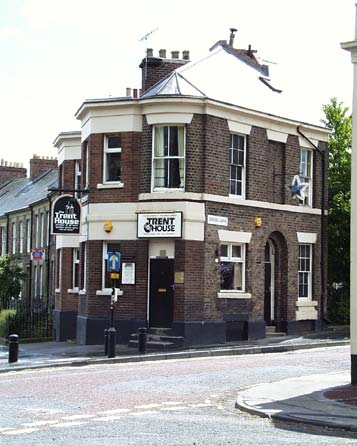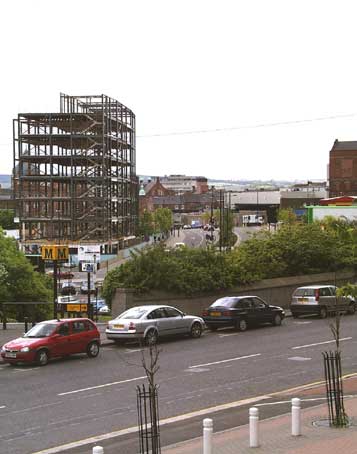 |
|
Leazes
Sat. 2nd June, 2001 |
|
The area near the football stadium is called Leazes from the the word meaning to glean or gather crops. It is
applied to the 51.4 hectares (127 acres) of green pasture near the city centre called Castle Leazes, part of which is now a park, that was granted to the town by King John and later confirmed by Edward III.
Leazes park, the first public recreation ground in the city, was opened on December 23rd 1873. It was recently
threatened by the greedy Football Company wanting to plonk a hideous stadium on the leafy acres. This was opposed by residents, and the Football Company had to use its existing site and an adjacent lorry
park for its cathedral to the bag of wind.
This is Strawberry Place, leading from the junction of Gallowgate and Barrack Road to Leazes Park Road. It was here that the town gallows was sited, a little
distance outside the town walls.
The Strawberry public house has survived the wholesale demolition in this area during the 1970s. The car park behind used to be a bath house, and the site of the
nearby Metro station was once St. James' Hall, an arena for boxing, wrestling, and latterly bingo. This earthy pub was the place where I first met Terry Robinson, a 19 year old lad consumed by Marxism and
determined to be different. Within 10 years he was dead, killed by AIDS. |
 |
|
|
 |
|
Those advertising hoardings occupy the site of St. James' Hall, now the location of the Metro Station. Welbar House is in the
background. This high rise government block was erected during the 1960s during the brave new world of building steel framed boxes with unremtting rectangular glazing and hard edges. Pictured below is the New Hall in
1965. It was built in 1929 to replace an earlier one erected twenty years earlier. I attended a Trades Union Mass meeting in there during 1975. |
 |
|
© Newcastle City Libraries |
|
|
That little car park is on the junction of Strawberry Place and Leazes Park Road. Thanks to
the removal of the corner property we can have a grand view of John Johnstone's 1880 synagogue building. The Jewish congregation moved to other premises during the 1970s and the building was put to use as a
hippy-ish shopping arcade until a fire gutted the interior in 1990. Restoration was completed by 1996 and it is now used for student accommodation.
The further northern stretch of Leazes Park Road
contains Victorian housing, now used as small business premises. Those car standing areas were small secluded gardens, and those small windowed upper storey rooms housed the servants. |
|
|
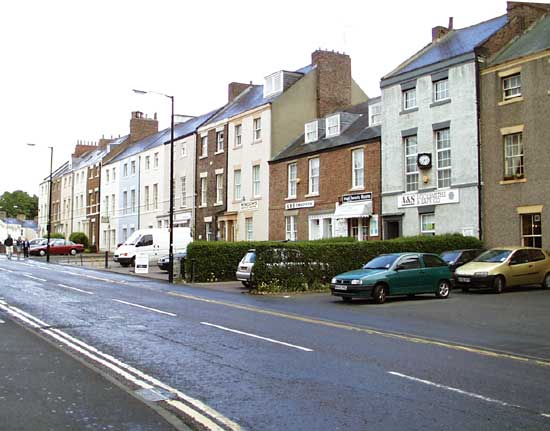 |
|
|
 |
 |
|
Here is similar housing, at Summerhill Grove where Emma and Thomas Pumphrey pose seated for a photo in 1908. They
were a successful Quaker family making their fortune from a grocery and tea dealing business. They are remembered today for the continuing coffee importing and roasting business. Occupants like these would
have been the first customers for electric light and new fangled devices like vacuum cleaners, washing machines and motor cars.
Housing of this sort was the preserve of the middle-class, and was
largely turned into multiple occupancy flats or commercial offices after the first World War. |
|
|
© 1999 Tyne & Wear Archive Service |
|
|
On the opposite side of the street are the small factories and offices, now partly used as a social and drinking
club. The white painted upper section are the home for Turners audio-visual service, a name connected with photogtraphy in the city for over seventy yeras. The main premises were in Pink Lane, opposite the
Central Station, and later a branch was opened in Emmerson Chambers, Blackett Street. |
|
|
|
|
 |
 |
|
In nearby St. Thomas' Crescent further middle-class town houses dating from the second quarter of the 19th century
have been lovingly preserved. The rear of the premises were given over to mews for the horses and sevants' accommodation.
These houses, with their tiny front gardens, were more truly town houses that
the Leazes Park Road dwellings, without the pretentions that later Victorian and Edwardian developers included in their designs. Simplicity and Victorian do not seem to fit together, but don't forget that
the Victorian era stretched for a generation and fashions, technical prowess, and commercial attitudes changed much during that time. "Victorian" is not a single style. |
|
 |
|
The Trent House is a small, yet very popular public house. Being close to the Newcastle University main site it is
well used by the student population, as are the hostelries on Percy Street, at the other end of St. Thomas' Street.
Newcastle University was for may years an adjunct to Durham, but gained its
independence in 1963. It was originally formed by Lord Armstrong in 1871 as the College of Physical Science, later Armstrong College in 1904, and King's College when it joined with the school of Medicine.
The University is housed in a variety of buildings, below, along St. Thomas' Street, is the elegant face of the 1920s King George VI Building. |
|
|
 |
 |
|
Lord Armstrong's generosity extended beyond his death. He left £100,000 for the building of the new Royal Victoria
Infirmary. Its original 1753 building at Forth Banks near the river were inadequate and impossible to expand. Armstrong's legacy, worth about £4 million in today's terms, was equalled by John Hall, a local
merchant, on the provision that the new site at Leazes be used.
Architects Willam Newcome from Newcastle and Percy Adams from London designed a modern and spacious hospital. The foundation was laid in
1900 and it was officially opened by King Edward VII on 11th July, 1906. The youthful queen, sculpted by George Frampton, relected the bold vigour and vision at the strart of the 20th century. |
|
|
|
|
 |
 |
|
Returning to the starting point for this short tour, the football stadium, this is the view from the entrance steps
looking along the newly constructed St. James' Boulevard. This wide road brings traffic directly to the Gallowgate Barrack Road roundabout from the new Redheugh bridge, opened by Princess Diana in 1983.
That new office building going up on part of the Gallowgate bus depot site already seems to dwarf its surroundings. Surely, such massive structures should be kept to the vast swathes of reclaimed
industrial land just to the west rather than allowed to pollute the city centre. Newcastle deserves a better heritage to hand to its sons and daughters. |
|
 |
 |
|
Site and contents (unless otherwise stated) © Tim. Pickford-Jones and Timmonet, Newcastle upon Tyne,
United Kingdom. |
|
 |
|
|
 |
|
If you should arrive here via a search, or be missing the navigation on the left hand side, click this button.
|
|





